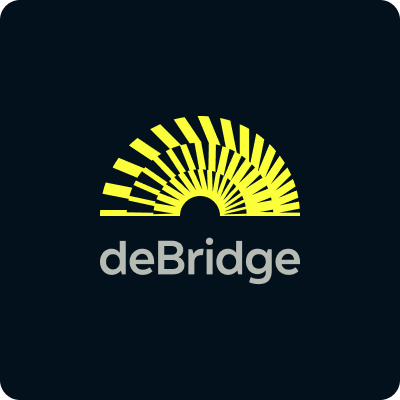An Introduction To deBridge Finance and Their Cross-Chain Interoperability Solutions
If you’re a fan of cross-chain interoperability solutions, chances are you’ve heard about deBridge Finance. deBridge defines itself as a generic messaging and cross-chain interoperability protocol that allows decentralized transfers of arbitrary data and assets between numerous blockchains, among which Ethereum, Polygon, and Avalanche.
Initially, deBridge started after winning the Chainlink Global Hackathon in the spring of 2021. Last February, the network announced the launch of its Mainnet, and the hardworking team behind this protocol continues to innovate and enhance its solutions.
The deBridge Protocol
The deBridge blockchain protocol was built to solve the problem of blockchain being secure but isolated networks with no access to real-world data or the state of any other chains. Leading to users having to rely on third-party (often centralized) services and solutions. Each time a user completes a transfer through a centralized bridge, they risk their funds getting stuck due to an imbalance of liquidity on either side of the bridge and thus their assets being frozen because of centralization.
To do so, the protocol consists of two separate layers, which are illustrated below via an image shown in their documentation. As you can see, there is the protocol layer and the infrastructure layer. The protocol layer is a collection of on-chain smart contracts used for asset management, cross-chain transaction routing, cross-validation of validators' signatures, and reaching consensus among validators (the transaction is considered valid only if the minimum required threshold of validators' signatures is met). The governance manages smart contract parameters such as fees, supported chains, the whitelist of elected validators, the validators' payout ratio, etc.
The infrastructure layer is represented by a group of trustworthy validators who run a deBridge node alongside full nodes of all blockchains supported by the protocol.
One of the many things that makes this protocol so interesting is the unique approach taken with off-chain transaction validation mechanics. Let us explain, every cross-chain transaction done through the deBridge smart contract is assigned a unique identifier (hash). DeBridge validators track all transactions that pass through the protocol's smart contract, and as soon as the transaction reaches its conclusion, each validator is required to sign a unique identifier of the transaction with its private key. The resulting signature is saved in IPFS and can be retrieved by anyone.
- IPFS refers to the Interplanetary File System, a decentralized file system for building the next generation of the internet.
Any user can collect validators' signatures from IPFS and pass them along with all transaction parameters to the deBridge smart contract in the target chain. deBridge smart contract will restore a unique hash of the transaction and cross-validate its signatures from all designated validators based on the past set of parameters. If the minimum required number of signatures is obtained, the deBridge Gate smart contract executes the transaction and transfers call data to the destination chain.
dePort
As the name suggests, deBridge offers a cross-chain bridge for multiple assets. As the deBridge blockchain enables anyone to create their own custom bridge on top of the deBridge infrastructure, however, dePort is the native cross-chain bridge for assets within the deBridge protocol. The dePort bridge doesn’t require any listings or forms to be filled to use it. That said, bridging assets can be done directly from the source chain to the destination. You can access the bridge here:

deExplorer
The deExplorer is the deBridge blockchain native block explorer (see image below). It tracks users, validators, supported blockchains, assets, and the number of transactions among others. You can access the explorer via:

deSwap
At the time of writing, deBridge has just introduced its third solution or product: deSwap, a solution for Web3 projects looking to offer users capital-efficient and secure cross-chain interactions, via a user-friendly interface.
You can access the swap via:

Furthermore, the deBridge Protocol allows transaction bundling. Which means, it allows the passing of arbitrary data and liquidity in one transaction between various chains. deBridge has added bundling support to the deSwap API to make it easier for protocols and applications to integrate swaps and interactions with their protocol. It is now possible to combine multiple transaction calls with disparate messages and commands into a single transaction. The first use case for this can be found here:

We encourage you to give it a try, however, please keep in mind that the network is still in Mainnet Beta. At Stakin, we’re excited to be along for the ride and future of the deBridge network. There's much yet to come with this protocol that keeps expanding and further developing its solutions.
DISCLAIMER: This is not financial advice. Staking, delegation, and cryptocurrencies involve a high degree of risk, and there is always the possibility of loss, including the failure of all staked digital assets. Additionally, delegators are at risk of slashing in case of security or liveness faults on some protocols. We advise you to do your due diligence before choosing a validator.


Join the conversation